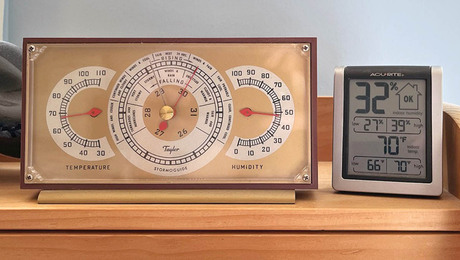I had a person who supposedly went to a tech school for construction tell me trusses had to be laid out so every 3rd truss would lay over a stud. It had been a long time since I was in consruction, but I don’t remember a rule like that. Is this something new or do I just not remember very well?
Discussion Forum
Discussion Forum
Up Next
Video Shorts
Featured Story

Source control, ventilation, and filtration are the keys to healthy indoor air quality. Dehumidification is important too.
Highlights
"I have learned so much thanks to the searchable articles on the FHB website. I can confidently say that I expect to be a life-long subscriber." - M.K.

















Replies
maybe....but,
That sounds really goofy to me.
truss layout
You're right. That was supposed to be every 2nd truss, but either way, I don't remember a rule any truss had to lay out directly over a stud. In order to get every 2nd truss to lay over a stud you have to start from the same end of the wall as you started with when laying out the studs. Or as this person told me, if you start from the opposite end, you need to mark the top plate so the 1st truss will lay over a stud and then go on from there. The only code I'm aware of is studs 16" on center and trusses 2' on center. So is he giving me good building advice, or is this code?
I think that is backward. When you are using the somewhat standard 16 o/c studs and 24 o/c truss, every 3d stud has a truss over it and every other truss is on a stud (48" increments).
The double top plate will deal with a little creep in the plan.
There are always builders, engineer, or trade schools that will insist on something that may or may not work in the real world. It sounds like something related to a certain type of huricane clip that attaches to the top of a stud and wraps up and around the bottom cord of a truss, which I'm sure is more secure than huricane clips that simply tie the top plates to the truss.
hurricane clips
IdahoDon wrote:
There are always builders, engineer, or trade schools that will insist on something that may or may not work in the real world. It sounds like something related to a certain type of huricane clip that attaches to the top of a stud and wraps up and around the bottom cord of a truss, which I'm sure is more secure than huricane clips that simply tie the top plates to the truss.
The better clips go over the top of the truss and they extend to the stud to increase uplift protection. You are then, not just pulling nails out of the top of the stud, you have the clip nails in shear and you are trying to rip the stud apart in tension.
The bottom of the stud should be tied to the foundation, not just the sole plate. You are creating a solid wood and steel connection from the roof to the footer.
The simpson strong tie web site has the protection afforded by the different systems listed.
That's total BS.
When people try to tell me stupid stuff like that, I ask them what code requires it. Usually they have no clue - It's just something they heard.
I have worked on unequal pitch roofs and the layout had nothing to do with the studs ,if you were to use that method the trusses woudn't work .
some people just learn enough to be dangerous
IRC 602.3.3 covers the requirements for trusses and joists over bearing studs. Greg got closer to the correct answer than the others.
Inspectors interpret this section of the code somewhat loosely in my opion, but they are mostly looking at load paths as well as the sud spacing, size and number of, or types of top plates. A very strict interpretaion of the code for a standard 2x4 wall @ 16" o.c. would reguire a third top plate or solid blocking for the truss or joist in a lay out that does not bear directly over a stud unless it is within 5" of the bearing stud. For 16" spacings this is seldom enforced. For 24" oc spacing it is, unless the the bearing wall is 2x6 @24"oc, and IMO there is not much of a reason for trusses on 24" centers to not line up over similarly spaced studs.
You tech school guy was mostly right, although it is a gray area,open to interpretation, in the IRC.
truss layout
Thanks guys for the great advice. I suppose there really isn't any more effort to line up a truss to lay over a few studs at 16" on center, and certainly not if we are talking 2x6 studs already on 2' centers. But, like toolpouchguy stated, there are going to be some roofs that would be hard to get anything lined up like that.
Code
" there are going to be some roofs that would be hard to get anything lined up like that."
That is why the code calls out a triple top plate or a 3x4 top plate. The idea that because roof raters or trusses don't stack over bearing studs doesn't mean that load paths can be ignored. That is why beams, headers, and top plates construction is important.